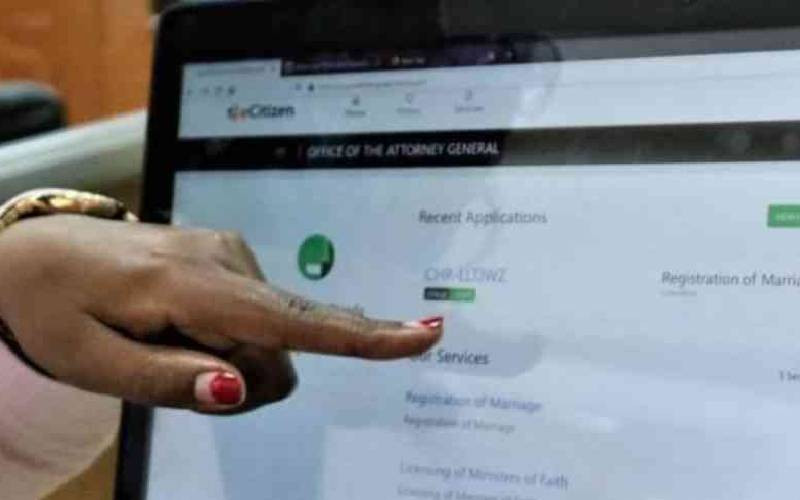NAIROBI: ‘If you tell me the truth, I will get mad, but I will get over it. If you lie to me, I will never be able to trust you again. It is your choice.” S.W., 19th November 2013.
Kenya’s first international sovereign bond, popularly known as the Euro Bond is listed on the Irish Stock Exchange. It was floated last year. According to the 2014 Annual Public Debt Report published by the National Treasury, Kenya issued the international bond with ten objectives.
One, to access external financing. Two, to attract more resources to Kenya’s financial systems. Three, to reduce domestic interest rates. Four, to boost investment. Five, to boost employment. Six, to boost economic growth. Seven, to consolidate macro-economic stability. Eight to stabilise the Kenya Shilling. Nine, to stabilise import prices. Ten, to reduce the total cost of living.
The international sovereign bond has so far achieved only one objective. To increase our external financing.
The international sovereign bond was oversubscribed. According to the Report of the Auditor General on June 24, 2014, the money received from the sale of the international bond, Sh176 billion, was first deposited in an offshore account. The payment of public funds in an offshore account was in breach of the Constitution. The Report of the Auditor General categorically states that under Article 206 of the Constitution and Section 17 (2) of the Public Finance and Management Act the Sh176 billion should have been paid directly into the Consolidated Fund through the exchequer account.
On July 3, 2014, of the Sh176 billion, Sh34 billion was transferred to the Exchequer account. It was recorded in the financial accounts of the National Government as money received in the financial year 2013/2014.
On July 3, 2014, the same day, Sh35 billion was transferred to Kenya, Sh53 billion was transferred from the offshore account to pay for a loan. This transaction, occurring on the same date as the money transferred to Kenya, was recorded in the financial statements of the National Government as a debt repayment for the 2014/2015 financial year.
In its Annual Public Debt Report of December 2014 the Cabinet Sectary National Treasury stated that the proceeds of the bond were used to pay a loan and support the budget that included the financing of infrastructure projects.
This report contradicts the Report of the Auditor General that states that only Sh35 billion out of Sh176 billion was absorbed into the budget.
The Cabinet Secretary National Treasury released a press statement on October 28, 2015 explaining that Sh161 billion, the proceeds of the Sovereign Bond, were transferred to a Sovereign Bond Account held at Central Bank of Kenya on September 8, 2014 and December 17, 2014. Central Bank then released Sh157 billion to the Exchequer Account between September 15, 2014 and June 30, 2015. According to the Central Bank’s Financial Statements such funds are held in its Special Projects Accounts. By June 30, 2014 the Special Projects account held Sh199 billion which did not include money from the Sovereign Bond.
The balance in Central Bank’s Special Project Account as of June 30, 2015 was Sh25 billion. There is no mention or note in Central Bank’s Financial Statements of 2015 of any increase in the Special Project Accounts, or the receipt of Sh161 billion proceeds of the Sovereign Bond on behalf of the Government in September and December 2014.
Between July 1, 2014 and June 30, 2015, Sh174 billion was withdrawn from the Special Projects Account of Central Bank of Kenya. The Financial Statements explain this drop as withdrawals by the Government on account of the international sovereign bond.
The only certainty about the international sovereign bond is that Kenyan taxpayers will have to repay it, with interest, in full by 2024.
 The Standard Group Plc is a
multi-media organization with investments in media platforms spanning newspaper
print operations, television, radio broadcasting, digital and online services. The
Standard Group is recognized as a leading multi-media house in Kenya with a key
influence in matters of national and international interest.
The Standard Group Plc is a
multi-media organization with investments in media platforms spanning newspaper
print operations, television, radio broadcasting, digital and online services. The
Standard Group is recognized as a leading multi-media house in Kenya with a key
influence in matters of national and international interest.
 The Standard Group Plc is a
multi-media organization with investments in media platforms spanning newspaper
print operations, television, radio broadcasting, digital and online services. The
Standard Group is recognized as a leading multi-media house in Kenya with a key
influence in matters of national and international interest.
The Standard Group Plc is a
multi-media organization with investments in media platforms spanning newspaper
print operations, television, radio broadcasting, digital and online services. The
Standard Group is recognized as a leading multi-media house in Kenya with a key
influence in matters of national and international interest.









